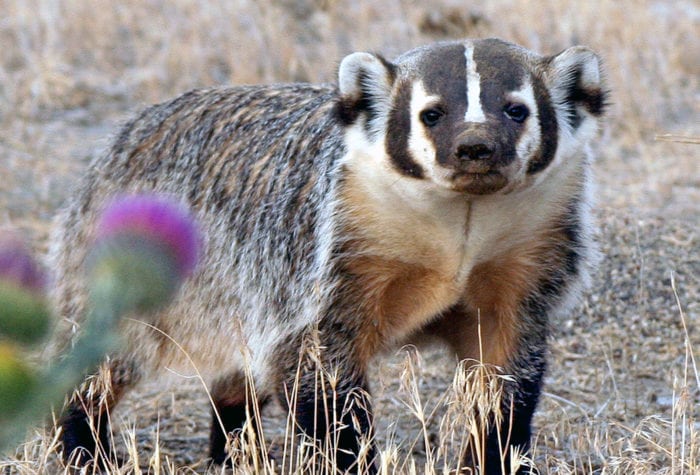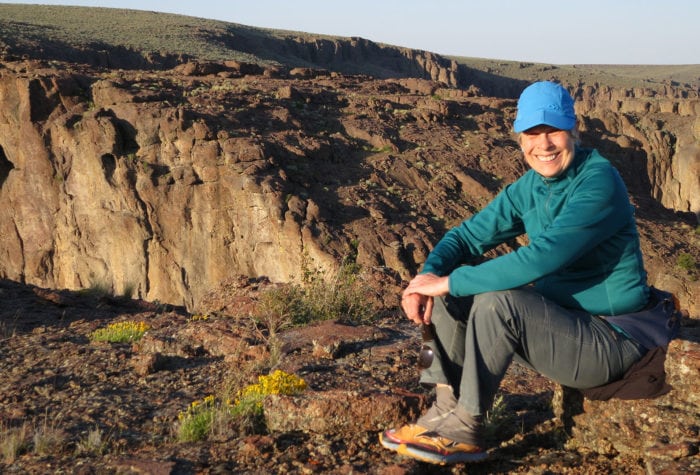Author: Renee Schiavone | Published: December 12, 2023 | Category: Where-To
This article originally appeared in The Bend Bulletin on November 24, 2023.
Escape the cold at one of these eastern Oregon hot springs
Winter begins and our bones labor to reconcile. Fierce cold and cutting drafts separate our clothes from our body. In the morning, we’re up before the sun, pouring strong coffee, putting on puffy jackets. We shuffle out the door stiff-legged, crunching over volcanic rock that’s been caulked into place by packed down snow. Soon we’ll shed our lofty down layers, exposing our pale skin to the bitter air, toeing our bare feet across damp ground. As quickly as we can, we’ll shiver our way into steamy solitude. Surrounded by snow-capped peaks and frosted brush, we’ll flash each other expressions of relief through thick condensation, soaking our bones and warming our skin in piping hot geothermal springs. The sun slides itself up the horizon and our silence is broken by hearty conversation, nourishing minerals and natural water.
The west coast loves its hot springs – and understandably so. Thanks to the nature of tectonic activity on this side of the country, fault lines lead the way to cracks in the earth’s surface that allow hot water to emerge as a spring. Oregon was the first place I experienced this phenomenon, and I still can’t find a better word to describe it than magical. This state, and Oregon’s high desert in particular, hosts some incredible springs to soak your bones throughout the colder months of the year.
This winter, try heading to the eastern side of the state to explore some of the most secluded, picturesque landscapes at one of these desert hot springs:
Hart Mountain Hot Springs
You have two options here: primitive or developed. Either way, this rustic escape is worth the effort to visit – and a great opportunity to surround yourself with the epic cliffs and peaks, wildlife, canyons and grasslands of Hart Mountain National Antelope Refuge. As the name implies, you’ll find public hot springs for soaking and 29 campsites at Hot Springs Campground, just 4 miles south of Hart Mountain National Antelope Refuge headquarters.
The “developed” Hart Mountain hot spring is quite a lovely stone enclosed sanctuary filled with bubbling warm natural water, a concrete deck with benches, and a ladder for entry. For those looking for more adventure and seclusion, there is the lesser known “primitive” hot spring that is totally natural and maybe even a bit warmer than the developed site. The primitive spring is located only about a minute walk from the developed hot spring – just head back toward the parking lot and take the path to the left. While you wade, be sure to look out for the area’s respected wildlife, including pronghorn, sage grouse and pygmy rabbit.
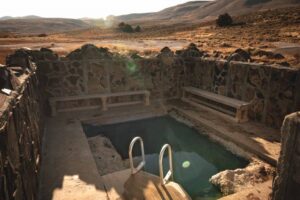
Summer Lake Hot Springs
Just two hours southeast of Bend, this 145-acre resort of natural artesian hot springs is one I’d truly call a retreat. Featuring abundant camping and lodging options for both individuals and large groups, the property is surrounded by untouched desert landscapes calling for your exploration. Plus – you’ll witness a number of unique, environmentally-conscious designs throughout the resort.
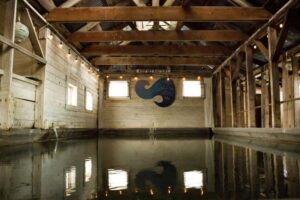
Three Forks Hot Springs
For those looking to work for their soak, the Owyhee Canyonland’s Three Forks Hot Springs rewards you with a scenic spring, situated beneath a picturesque waterfall. Beginning at the confluence of three spectacular tributaries – the North, Middle and Main forks – of the Owyhee River, the primary route to this hot spring is a 3-mile hike with views of the dramatic Three Forks Dome and jagged canyon below. Or, take an alternate route up the canyon to the springs. From the Three Forks Recreation Site, ford the Middle Fork Owyhee River and walk through the towering canyon walls along an intermittent path. About 2 miles in, you will see the cascading falls of the warm springs on your right.
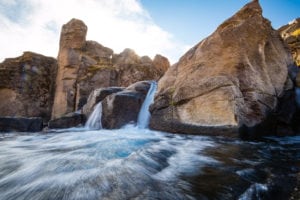
Crane Hot Springs
A great rest-stop on your journey toward the farthest reaches of eastern Oregon, this soaking resort offers a welcoming experience for all. The large hot spring pond is accessible for day use and is included in your stay for overnight guests. At 101 degrees and 7’ deep at its center, the expansive pool never feels full and offers one of the more enjoyable developed hot spring experiences in the state. This spot is an ideal stopover on your way to exploring the exceptional desert wonders of Oregon’s Owyhee Canyonlands.
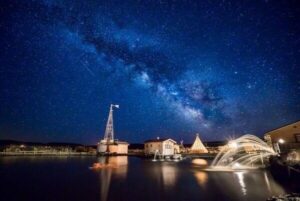
Alvord Hot Springs
Sitting on the edge of the Alvord Desert Playa and beneath iconic Steens Mountain – Oregon’s first and largest desert wilderness area – you’ll find twin concrete pools filled with ground water approximating 170 degrees that is then cooled when mixed in the soaking pools. Overnight Alvord Hot Springs guests can enjoy the two small pools at any hour, while day-use visitors are welcome by appointment. A stop here for a daytime soak is a great pairing to your Steens visit and other-worldly camping experience in the Alvord Desert.
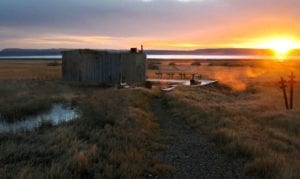
—Renee Schiavone is the Communications Manager at Oregon Natural Desert Association, a nonprofit organization that protects and restores Oregon’s high desert public lands and waters. Read more of her work at onda.org/author/rschiavone/.

